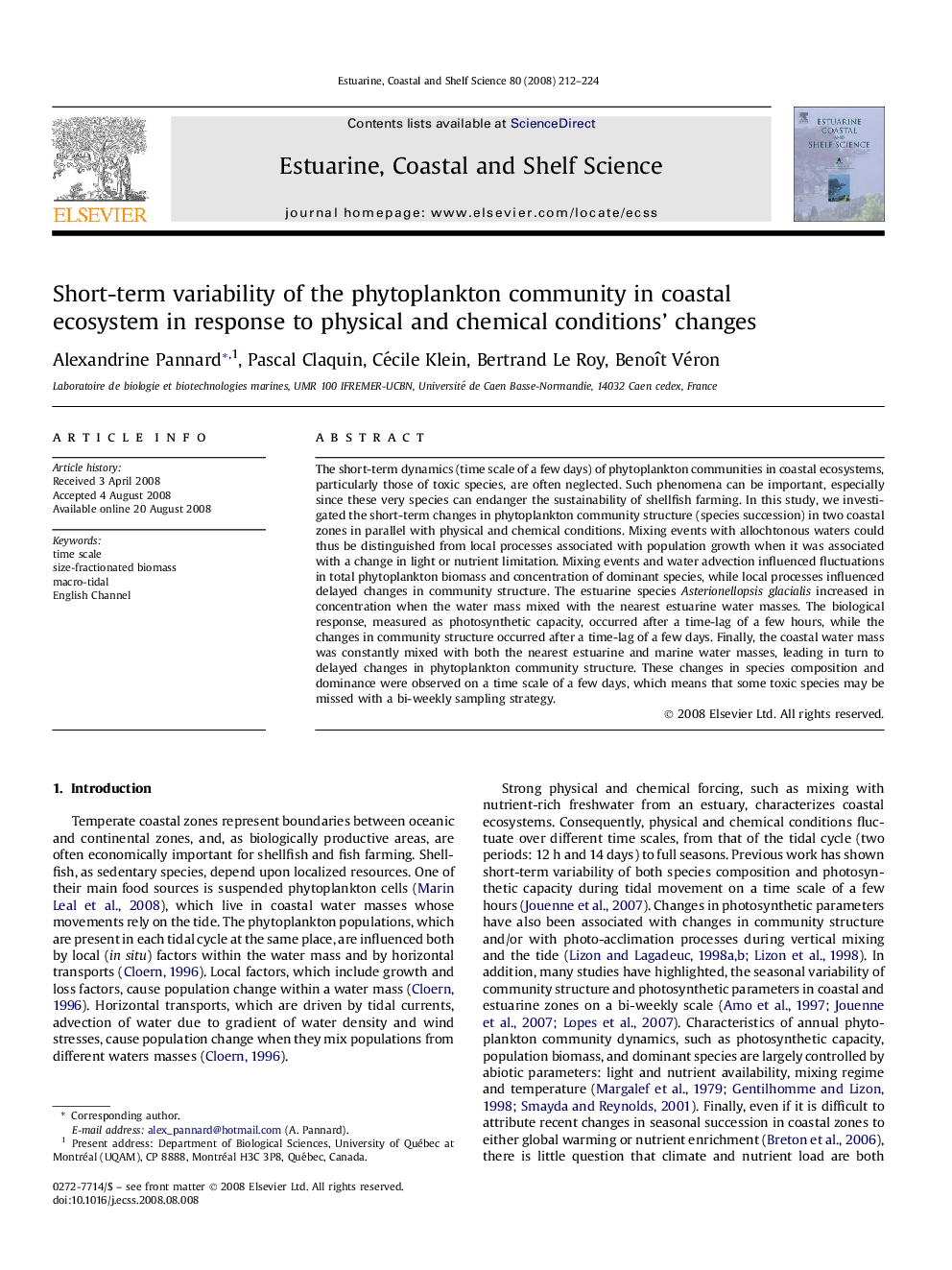| Article ID | Journal | Published Year | Pages | File Type |
|---|---|---|---|---|
| 4541681 | Estuarine, Coastal and Shelf Science | 2008 | 13 Pages |
The short-term dynamics (time scale of a few days) of phytoplankton communities in coastal ecosystems, particularly those of toxic species, are often neglected. Such phenomena can be important, especially since these very species can endanger the sustainability of shellfish farming. In this study, we investigated the short-term changes in phytoplankton community structure (species succession) in two coastal zones in parallel with physical and chemical conditions. Mixing events with allochtonous waters could thus be distinguished from local processes associated with population growth when it was associated with a change in light or nutrient limitation. Mixing events and water advection influenced fluctuations in total phytoplankton biomass and concentration of dominant species, while local processes influenced delayed changes in community structure. The estuarine species Asterionellopsis glacialis increased in concentration when the water mass mixed with the nearest estuarine water masses. The biological response, measured as photosynthetic capacity, occurred after a time-lag of a few hours, while the changes in community structure occurred after a time-lag of a few days. Finally, the coastal water mass was constantly mixed with both the nearest estuarine and marine water masses, leading in turn to delayed changes in phytoplankton community structure. These changes in species composition and dominance were observed on a time scale of a few days, which means that some toxic species may be missed with a bi-weekly sampling strategy.
